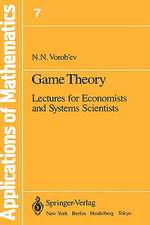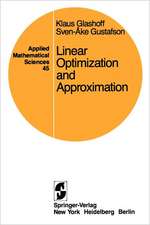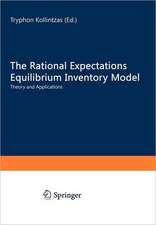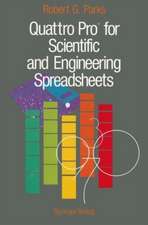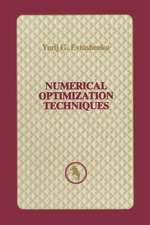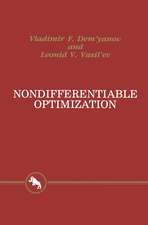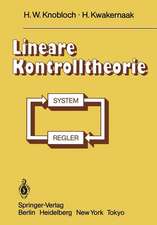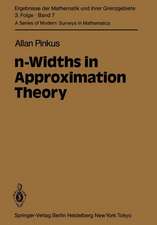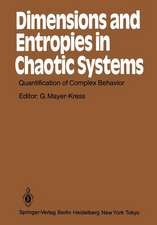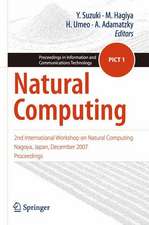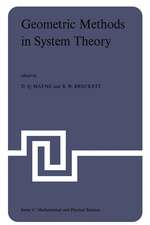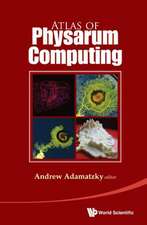Shortest Path Solvers. From Software to Wetware: Emergence, Complexity and Computation, cartea 32
Editat de Andrew Adamatzkyen Limba Engleză Hardback – 7 mai 2018
| Toate formatele și edițiile | Preț | Express |
|---|---|---|
| Paperback (1) | 647.92 lei 6-8 săpt. | |
| Springer International Publishing – 5 ian 2019 | 647.92 lei 6-8 săpt. | |
| Hardback (1) | 654.43 lei 6-8 săpt. | |
| Springer International Publishing – 7 mai 2018 | 654.43 lei 6-8 săpt. |
Din seria Emergence, Complexity and Computation
- 8%
 Preț: 397.83 lei
Preț: 397.83 lei - 18%
 Preț: 1132.65 lei
Preț: 1132.65 lei - 18%
 Preț: 946.72 lei
Preț: 946.72 lei - 20%
 Preț: 651.75 lei
Preț: 651.75 lei - 20%
 Preț: 570.97 lei
Preț: 570.97 lei - 15%
 Preț: 653.33 lei
Preț: 653.33 lei - 15%
 Preț: 648.24 lei
Preț: 648.24 lei - 15%
 Preț: 651.19 lei
Preț: 651.19 lei - 20%
 Preț: 940.98 lei
Preț: 940.98 lei -
 Preț: 392.37 lei
Preț: 392.37 lei - 15%
 Preț: 647.59 lei
Preț: 647.59 lei - 15%
 Preț: 641.71 lei
Preț: 641.71 lei - 15%
 Preț: 645.28 lei
Preț: 645.28 lei - 15%
 Preț: 649.06 lei
Preț: 649.06 lei - 18%
 Preț: 1415.22 lei
Preț: 1415.22 lei - 20%
 Preț: 1304.44 lei
Preț: 1304.44 lei - 20%
 Preț: 1296.18 lei
Preț: 1296.18 lei - 20%
 Preț: 655.35 lei
Preț: 655.35 lei - 15%
 Preț: 648.56 lei
Preț: 648.56 lei - 18%
 Preț: 953.82 lei
Preț: 953.82 lei - 20%
 Preț: 657.02 lei
Preț: 657.02 lei - 18%
 Preț: 1117.03 lei
Preț: 1117.03 lei - 20%
 Preț: 992.26 lei
Preț: 992.26 lei - 15%
 Preț: 656.74 lei
Preț: 656.74 lei - 20%
 Preț: 649.60 lei
Preț: 649.60 lei - 20%
 Preț: 661.14 lei
Preț: 661.14 lei - 20%
 Preț: 645.47 lei
Preț: 645.47 lei - 20%
 Preț: 658.19 lei
Preț: 658.19 lei - 20%
 Preț: 644.15 lei
Preț: 644.15 lei - 18%
 Preț: 880.77 lei
Preț: 880.77 lei - 20%
 Preț: 1455.75 lei
Preț: 1455.75 lei - 20%
 Preț: 1158.26 lei
Preț: 1158.26 lei
Preț: 654.43 lei
Preț vechi: 769.92 lei
-15% Nou
Puncte Express: 982
Preț estimativ în valută:
125.24€ • 130.59$ • 104.09£
125.24€ • 130.59$ • 104.09£
Carte tipărită la comandă
Livrare economică 21 martie-04 aprilie
Preluare comenzi: 021 569.72.76
Specificații
ISBN-13: 9783319775098
ISBN-10: 331977509X
Pagini: 476
Ilustrații: VIII, 441 p. 187 illus., 90 illus. in color.
Dimensiuni: 155 x 235 mm
Greutate: 0.81 kg
Ediția:1st ed. 2018
Editura: Springer International Publishing
Colecția Springer
Seria Emergence, Complexity and Computation
Locul publicării:Cham, Switzerland
ISBN-10: 331977509X
Pagini: 476
Ilustrații: VIII, 441 p. 187 illus., 90 illus. in color.
Dimensiuni: 155 x 235 mm
Greutate: 0.81 kg
Ediția:1st ed. 2018
Editura: Springer International Publishing
Colecția Springer
Seria Emergence, Complexity and Computation
Locul publicării:Cham, Switzerland
Cuprins
A parallel algorithm for the constrained shortest path problem on lattice graphs.- Gathering a Swarm of Robots through Shortest Paths.- The MinSum-MinHop and the MaxMin-MinHop bicriteria path problems.- Distance-Vector Algorithms for Distributed Shortest Paths Computation in Dynamic Networks.- Influenza Virus Algorithm for Multiobjective Energy Reduction Open Vehicle Routing Problem.- Computng shortest paths with cellular automata.- Cellular Automata Applications in Shortest Path Problem.- Checkerboard Pattern Formed by Cellular Automata Agents.- Do ants use Ant Colony Optimization.- Slime Mould Inspired Models for Path Planning: Collective and Structural Approaches.
Notă biografică
Textul de pe ultima copertă
This book offers advanced parallel and distributed algorithms and experimental laboratory prototypes of unconventional shortest path solvers. In addition, it presents novel and unique algorithms of solving shortest problems in massively parallel cellular automaton machines. The shortest path problem is a fundamental and classical problem in graph theory and computer science and is frequently applied in the contexts of transport and logistics, telecommunication networks, virtual reality and gaming, geometry, and social networks analysis. Software implementations include distance-vector algorithms for distributed path computation in dynamics networks, parallel solutions of the constrained shortest path problem, and application of the shortest path solutions in gathering robotic swarms. Massively parallel algorithms utilise cellular automata, where a shortest path is computed either via matrix multiplication in automaton arrays, or via the representation of data graphs in automaton lattices and using the propagation of wave-like patterns. Unconventional shortest path solvers are presented in computer models of foraging behaviour and protoplasmic network optimisation by the slime mould Physarum polycephalum and fluidic devices, while experimental laboratory prototypes of path solvers using chemical media, flows and droplets, and electrical current are also highlighted. The book will be a pleasure to explore for readers from all walks of life, from undergraduate students to university professors, from mathematicians, computers scientists and engineers to chemists and biologists.
Caracteristici
Comprehensively addresses the famous problem of shortest path solving in the context of computer science, network theory, operational systems, swarm robotics, and graph theory Presents novel and unique algorithms of solving shortest problems in massively parallel cellular automaton machines, graphs populated with mobile automata, and the imitated foraging behaviour of slime moulds Discusses unconventional prototypes of experimental laboratory shortest path solvers using chemical systems, electrical current, single living cells, and plants Includes unique contributions prepared by the world’s leading experts in computer science, engineering, applied mathematics, chemistry, physics, and biology Richly illustrated: its wealth of graphical examples will appeal not only to scientists but also to engineers, industry representatives, and the general public


